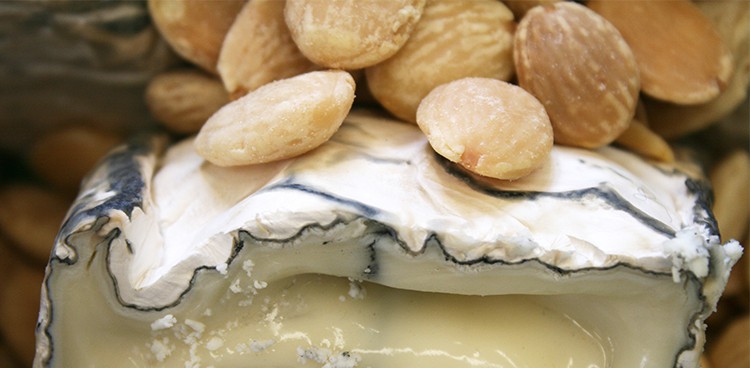
Few things confuse me more than going to a gathering and seeing a cheese plate with a can of mixed nuts or plain peanuts next to it. The pair looks awkward, kind of like a nervous couple at a dance. I know that if they got the moves right, they could tango pretty well together. But if they continue with the way they are now, it won’t be a fun night for either of them.
What does that mean? Well, it means I had awkward high school dances. It also means that nuts and cheese are frequently paired together but, oftentimes, not very well. A cheddar does not taste the same as a fontina, so the two will probably be better suited with different nuts. It’s about time we put thought into pairing our nuts and our cheeses. Help them get out of that awkward high school dance stage, please!
Take my friend Fontina, from the previous paragraph. She’s mild, earthy, slightly nutty, and semi-firm. Her disposition goes well with sugared hazelnuts. This nut has a buttery flavor, which becomes more complex with a sugar coating.
For something more adventurous, buy a queso fresco or queso blanco. This cheese is creamy and crumbly, reminiscent of feta. Pair it with a tray of marcona almonds. Not only are marcona almonds a great match because they’re crunchy and flavorful, but they come from the same culinary tradition as queso fresco!
Rory Stamp, our go-to cheesemonger at Formaggio Kitchen in Cambridge, Mass., tells us why location matters: “Something that’s really easy for us is to look at regional or geographical pairings. So for example, if you had something like manchego, we would look at the other condiments that are classically produced in that region of Spain. So we’d have membrillo quince paste, we have marcona almonds and olive oil. Chances are that the regional cuisine is going to lend itself to other pairings.”

Photo Credit: “manchego” by stu_spivack | CC BY-SA 2.0
That’s a foolproof tip to keep in mind. Now, onto the next pairing: I personally enjoy cheeses that already have a pretty nutty flavoring, like Parmigiano Reggiano or asiago. So what nut do you pair with an already nutty cheese? Instead of toasted nuts, buy preserved nuts, like a rosemary-honey preserved almond jar. This way the nut is sweeter and a bit more mild, so the combination won’t make you feel like a squirrel.
If you love noshing on bags of pistachios as much as I do, then you should probably work on a nut pairing for that as well. Picture this: warm pistachios alongside a creamy, pungent cheese like brie or camembert. Is that a sight for sore eyes or what? These cheeses are rich and decadent, but also a little sweet. This means they fit the sweet and salty principle. The textures of this pairings are also complementary—the nuts provide a much-needed crunch to the smooth texture of these soft-ripened cheeses.
For blue cheese lovers who drooled over the dessert pairing post, which included a sinful caramel and blue cheese pairing, there’s a nut combo just as stunning. The tangy, salty, powerful flavor of blue cheese is a perfect match for nut brittle. This is a twist on the traditional nut and cheese pairing, but it’s a twist gone right. The extra-sweet, caramel tones in brittle help balance the savor of a mighty blue cheese.
Have you been testing out some of the pairings in the It Takes Two to Make a Cheese Go Right blog series? Upload a photo with the #culturepairings and you could win a free issue of culture: the word on cheese!
Feature Photo Credit: “Nuts and cheese” by Quinn Dombrowski | CC BY-SA 2.0



